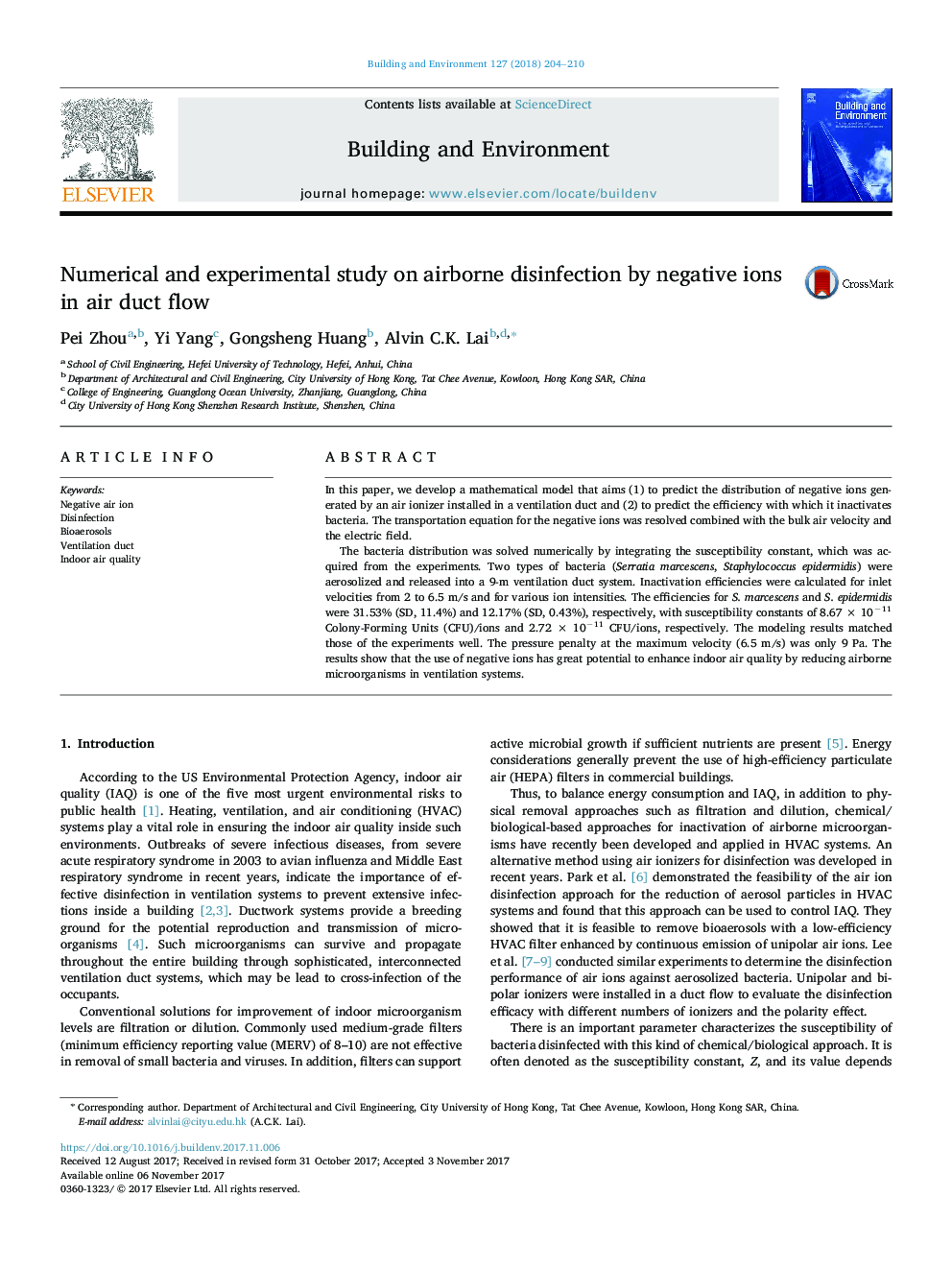| Article ID | Journal | Published Year | Pages | File Type |
|---|---|---|---|---|
| 6698506 | Building and Environment | 2018 | 7 Pages |
Abstract
The bacteria distribution was solved numerically by integrating the susceptibility constant, which was acquired from the experiments. Two types of bacteria (Serratia marcescens, Staphylococcus epidermidis) were aerosolized and released into a 9-m ventilation duct system. Inactivation efficiencies were calculated for inlet velocities from 2 to 6.5Â m/s and for various ion intensities. The efficiencies for S. marcescens and S. epidermidis were 31.53% (SD, 11.4%) and 12.17% (SD, 0.43%), respectively, with susceptibility constants of 8.67Â ÃÂ 10â11 Colony-Forming Units (CFU)/ions and 2.72Â ÃÂ 10â11Â CFU/ions, respectively. The modeling results matched those of the experiments well. The pressure penalty at the maximum velocity (6.5Â m/s) was only 9Â Pa. The results show that the use of negative ions has great potential to enhance indoor air quality by reducing airborne microorganisms in ventilation systems.
Related Topics
Physical Sciences and Engineering
Energy
Renewable Energy, Sustainability and the Environment
Authors
Pei Zhou, Yi Yang, Gongsheng Huang, Alvin C.K. Lai,
